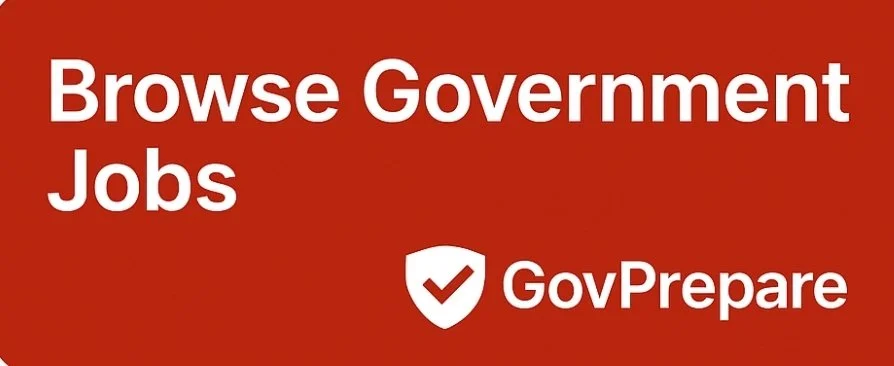
Canada Conducts Latest Express Entry Draw: 3,750 Invited With CRS Cutoff at 492 – July 2025 Update
Introduction to Canada’s Express Entry System
The Express Entry system is a pivotal immigration management framework implemented by the Government of Canada to streamline the process for skilled foreign workers seeking to settle in the country. Introduced in January 2015, this system is designed to facilitate the selection of candidates through a holistic approach that focuses on the skills, work experience, and ongoing adaptability of potential immigrants. The primary objective is to attract and retain skilled labor to address the growing demands of the Canadian labor market.
At the heart of Canada’s Express Entry system is the Comprehensive Ranking System (CRS), which evaluates candidates based on numerous criteria, including age, education, language proficiency, work experience, and adaptability factors. This point-based assessment enables the Canadian government to identify high-quality candidates who are best suited to contribute to the country’s economy. Candidates in the Express Entry pool are ranked against each other, and the highest-scoring individuals receive invitations to apply (ITAs) for permanent residency during regular draws, such as the recent one that invited 3,750 candidates with a CRS cutoff of 492.
Express Entry encompasses three primary immigration programs: the Federal Skilled Worker Program, the Federal Skilled Trades Program, and the Canadian Experience Class. Each of these programs has specific eligibility criteria, allowing for a diverse range of applicants to enter the pool. Whether it be a skilled worker with international experience or a foreign student who has recently graduated from a Canadian institution, the Express Entry system provides a pathway for qualified individuals from various backgrounds to improve Canada’s workforce.
This efficient immigration system not only benefits Canada by bringing in skilled workers but also enhances the quality of life for newcomers who contribute positively to the socio-economic landscape of the country.
Details of the Recent Draw
On July 2, 2025, Canada held its latest Express Entry draw, issuing a total of 3,750 Invitations to Apply (ITAs) for permanent residency. This draw reflects the Canadian government’s ongoing commitment to attract skilled workers and bolster the nation’s economy by filling labor market gaps. The Comprehensive Ranking System (CRS) cutoff score for this particular draw was established at 492, demonstrating the competitive nature of the selection process.
The CRS is an integral part of Canada’s immigration system, whereby candidates are ranked based on various factors, including age, education, work experience, and language proficiency. A CRS score of 492 indicates a strong profile among the candidates who received invitations in this draw. This score remains relatively consistent with previous draws, highlighting the necessity for prospective applicants to meet or exceed this benchmark to be considered for an ITA.
Potential candidates aiming for permanent residency in Canada should recognize the implications of the latest draw results. The issuance of 3,750 ITAs suggests a healthy immigration flow, yet the required CRS scores imply that individuals must focus on enhancing their profiles to improve their chances of receiving an invitation in future draws. Effective strategies may include improving language test scores, gaining additional work experience, or pursuing further education, all of which can positively influence a candidate’s CRS standing.
Ultimately, the continuing adjustments and developments within the Express Entry system aim to attract a diverse range of skilled immigrants who can contribute to Canada’s labor market and economic growth. As the immigration landscape evolves, prospective candidates must remain informed and proactive in optimizing their profiles to align with Canada’s priorities.
Understanding the CRS Score
The Comprehensive Ranking System (CRS) is a pivotal component of Canada’s Express Entry immigration system, designed to assess and rank candidates for permanent residency. The CRS awards points based on several factors, which collectively determine a candidate’s suitability for immigration. These factors include age, education, work experience, language proficiency, and other criteria such as Canadian employment experience and adaptability. Each of these elements contributes to the overall CRS score, which can significantly impact an individual’s chance of receiving an Invitation to Apply (ITA).
Age is a crucial determinant in the scoring formula; candidates between the ages of 20 and 29 receive the highest points. As age increases beyond this range, the scoring potential declines. Education also plays a significant role, with higher levels of education correlating to higher points. Canadian work experience is another critical element; candidates who have worked in Canada gain additional points, thereby increasing their competitiveness within the pool.
Language proficiency in English or French is weighted heavily in the CRS score calculation. Candidates who excel in language tests such as the IELTS or CELPIP for English or the TEF for French can secure considerable points, potentially making them stand out among applicants. Furthermore, having a valid job offer from a Canadian employer can add additional points, enhancing a candidate’s overall score.
In the recent Express Entry draw, a CRS cutoff of 492 indicates a competitive threshold, reflecting the evolving landscape of immigration in Canada. This score suggests that candidates must possess a robust blend of education, experience, and language capabilities to be considered viable applicants. The CRS score remains a dynamic tool that serves to facilitate the selection of individuals who can contribute significantly to Canadian society and its economy.
Who Qualifies for Express Entry?
The Express Entry system is an efficient immigration pathway introduced by the Canadian government to facilitate the selection of skilled workers for permanent residence. To qualify for this program, applicants must satisfy several key criteria, which encompass language proficiency, educational qualifications, work experience, and the submission of a comprehensive Express Entry profile.
One primary requirement for potential candidates is demonstrating proficiency in one of Canada’s official languages: English or French. This is typically done through recognized language tests, such as the International English Language Testing System (IELTS) or the Canadian English Language Proficiency Index Program (CELPIP). Applicants are required to achieve minimum scores that correspond to the Canadian Language Benchmark (CLB) standards, which varies based on the immigration program individuals are applying under.
Moreover, candidates must have their academic credentials assessed through an Educational Credential Assessment (ECA). This assessment verifies that their educational qualifications meet Canadian standards, ensuring that foreign qualifications are recognized in the Canadian labor market. The ECA is critical because it serves to confirm the applicant’s education level, directly impacting their Comprehensive Ranking System (CRS) score.
To enter the Express Entry pool, candidates need to create a valid Express Entry profile, which includes submitting detailed information about their work experience, education, and other personal details. It is essential to ensure that all information is accurate, as discrepancies can lead to disqualification. Given the competitive nature of the system, where invitations to apply (ITA) are issued based on CRS scores, candidates must continuously optimize their profiles by enhancing their qualifications or improving language test scores to increase their chances of receiving an ITA. Meeting these criteria is the first step towards a successful application through Canada’s Express Entry system.

Implications for Skilled Workers
The recent Express Entry draw conducted by Canada, which invited 3,750 candidates with a Comprehensive Ranking System (CRS) cutoff of 492, has significant implications for skilled workers across various sectors. Notably, this draw reflects Canada’s ongoing effort to attract and retain skilled talent, particularly in industries facing labor shortages such as healthcare, technology, and trades. By setting a specific CRS threshold, the Canadian government aims to prioritize candidates who possess the necessary skills to fill crucial job vacancies, thereby fostering economic growth.
The focus on key sectors underscores a strategic response to the increasing demand for skilled professionals. In the healthcare sector, for instance, shortages have been pronounced due to an aging population and increased public health needs. The draw signals a concerted effort to bolster healthcare services by attracting qualified nurses, physicians, and other healthcare practitioners to ensure that essential services are maintained and enhanced.
Similarly, the technology sector continues to evolve rapidly, necessitating a robust influx of skilled workers proficient in areas such as software development, cybersecurity, and artificial intelligence. The invitation of candidates with high CRS scores indicates that Canada is actively seeking talented individuals who can contribute to innovation and maintain the country’s competitiveness in the global economy.
In the realm of trades, Canada has recognized the importance of skilled tradespeople in building and maintaining infrastructure, particularly given recent investments in housing and public works. The draw highlights the government’s commitment to supporting this sector through immigration policies that attract qualified trades workers.
Ultimately, the latest Express Entry draw illustrates Canada’s strategy to address labor shortages while promoting economic sustainability. It creates pathways for skilled individuals to contribute to the nation’s growth and enhances the country’s ability to respond to future workforce challenges across critical industries.

Expected Future Draws and Trends
The landscape of Canada’s Express Entry system is continually evolving, and as we look toward future draws, several trends are emerging that could significantly influence the selection process. Recent patterns suggest that the Canadian government may increasingly focus on aligning immigration with labor market needs. Given the current economic climate, there is a strong possibility that future draws will target candidates who possess skills in high-demand sectors, including positions in STEM (Science, Technology, Engineering, and Mathematics) fields. This targeted approach aims to bolster the workforce in essential industries while ensuring that newcomers can seamlessly integrate into the job market.
Another trend that may shape upcoming draws is the strategic focus on the Provincial Nominee Program (PNP). Provinces in Canada have unique labor market needs, and as such, they may express a greater interest in selecting candidates who meet specific regional economic requirements. The federal government might facilitate this by increasing invitations to PNP candidates, thus allowing provinces to directly address their workforce shortages. By prioritizing individuals who have received provincial nominations, the Express Entry system can streamline the immigration process for those who are already aligned with regional economic objectives.
Furthermore, category-based selections are likely to gain traction in future draws. The government might emphasize specific attributes, such as language proficiency in French, thus catering to the needs of Francophone communities across Canada. This approach indicates a nuanced understanding of the diversity within the workforce and a commitment to fostering inclusivity. As the Express Entry framework adapts to these trends, candidates should remain informed and strategically enhance their profiles to increase their chances of receiving invitations in future draws.
Impact of the Tie-Breaker Rule
The tie-breaker rule is an essential aspect of Canada’s Express Entry system that impacts candidates who achieve the same Comprehensive Ranking System (CRS) score. In the context of the latest Express Entry draw held in July 2025, where 3,750 invitations were issued with a CRS cutoff of 492, the tie-breaker rule was notably applied. This rule determines which candidates will receive invitations based on the date and time of their Express Entry profile submission.



